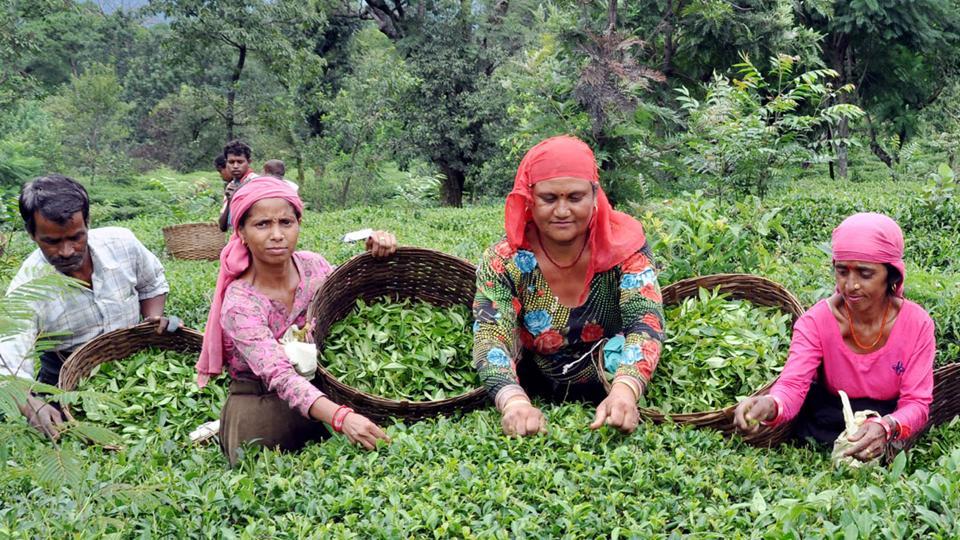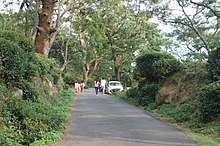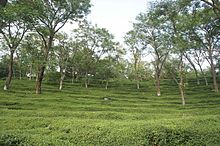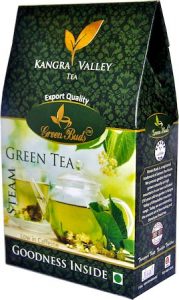Kangra tea is a tea from the Kangra district in Himachal Pradesh, India. Both black tea and green tea have been produced in the Kangra Valley since the mid-19th century. Kangra tea was given the Geographical Indication status in 2005.
Tea was first grown in the Kangra region in the mid-19th century. After a feasibility survey in 1848 showed the area of being suitable for tea plantation, a Chinese variety of Camellia sinensis was planted across the region. The production turned out to be successful in Palampur and Dharamshala, despite failing in other locations By the 1880s, the Kangra tea was considered to be superior to tea from other places and was bought in Kabul and Central Asia. In 1882, the Kangra District Gazette described Kangra tea as “superior to that produced in any other part of India. In 1886 and 1895, the tea received gold and silver medals at international conventions held in London and Amsterdam.
Locals and tourists alike take walks through a tea estate in Dharamsala. However, the 1905 Kangra earthquake caused thousands of deaths and destruction of factories, forcing the British to sell the plantations and leave the area. In the decades that followed, only small quantities of Kangra tea were produced by the new owners.
After a further decline in production in the 21st century, research and techniques are being promoted, aimed at reviving the brand by increasing production. In 2012, the then Union Minister for Commerce & Industry, Anand Sharma, laid the foundation stone for the Palampur regional office of the Tea Board of India, marking a significant step towards the re-integration of the Kangra region into the mainstream of the Indian tea industry.
Although Kangra cultivates both black tea and green tea, black tea constitutes around 90 percent of the production. As of May 2015, there are 5,900 tea gardens in the area covering about 2,312 hectares of land between Dharamsala, Shahpur, Palampur, Baijnath and Jogindernagar; with an annual output of 8.99 lakh kg.
Kangra tea is known for its unique color and flavor. The unique characteristics of the tea is attributed to the geographical properties of the region. It was granted the Geographical Indication tag in 2005 by Office of the Controller-General of Patents, Designs and Trademarks, Chennai, as per Geographical Indications of Goods (Registration and Protection) Act, 1999.
Flavour is indeed the unique selling proposition of Kangra tea. The Chinese hybrid variety grown here produces a very pale liquor, which is the reason why Kangra does not produce any CTC (crushed, turned, curled) tea—the staple tea of India.
Tea tourism is slowly beginning to gain ground in and around Kangra. Several of the tea estates and tea factories in Palampur and Dharamsala offer factory tours as well as homestays for those interested in learning more about the tea. The Dharmsala Tea Company offers guided tours of its factory and tea gardens, starting from its factory in Mann Tea Estate. Similarly, the Palampur Cooperative Tea Factory offers factory tours and homestays.






